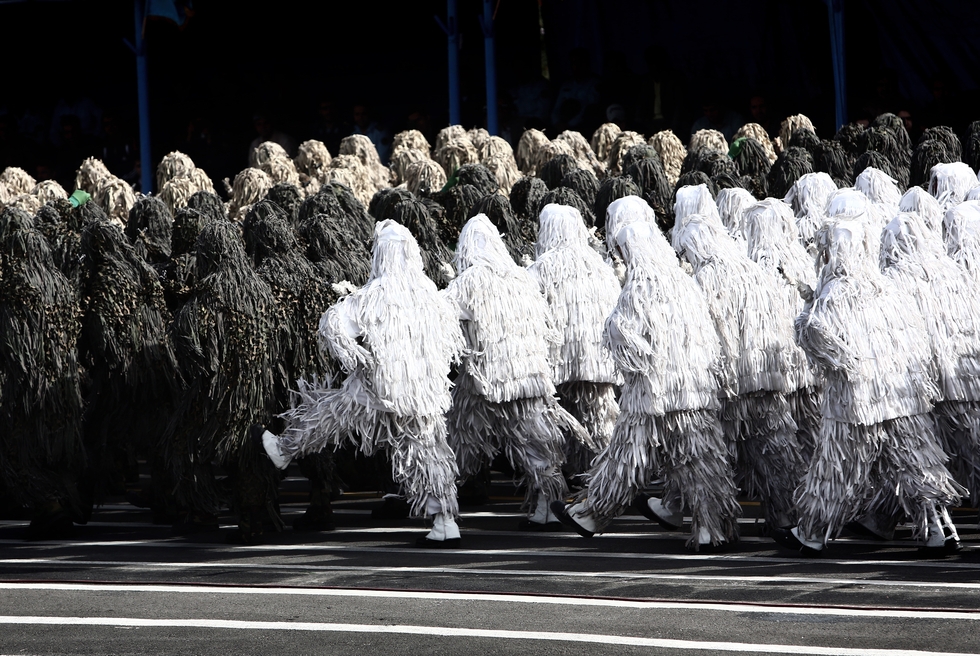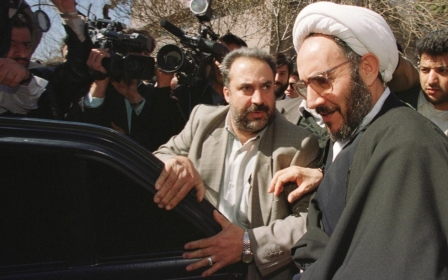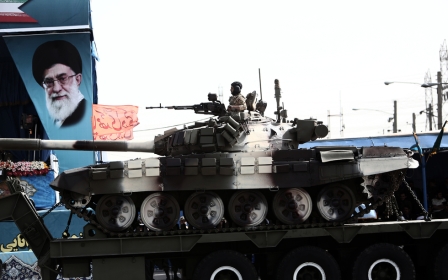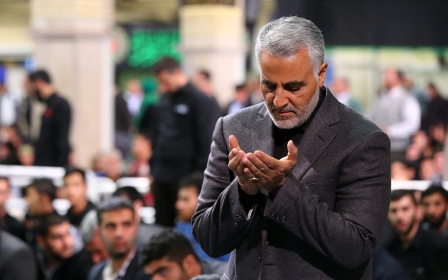Iran's tension with its Arab neighbours won't be ending any time soon

The dispute between Iran and most of its Arab neighbours is no longer a mere political interplay over interests and bolstering influence. If one were to consider such disputes from different angles, it is clear that the Arab region is facing an Iranian question, one that is extremely complex. This question is not likely to be resolved whether the Americans agree or not to adopt the Arab view point vis-à-vis Iran, as the Gulf states have been trying for months to persuade their American ally to do.
There is no doubt that the conflict in the Middle East is arousing the interest and concern of the main international powers, foremost among them the United States.
Yet, US interest and concern is not as it used to be, despite the importance of the region as a source of energy resources, and also considering that it has been the source of a new wave of international terrorism and millions of refugees; not to mention the existence of Israel.
It is clear that the majority of the Western states no longer believe the dangers emanating from the Middle East pose a great threat to their national security and no longer believe that such dangers are impossible to contain. The advice Obama gave to the Gulf states at the Riyadh summit last week indicated that the US policy of avoiding embroilment in the Middle East is still as it is.
On the other hand, whether the Western powers welcomed the escalation in the Arab-Iranian conflict or feared its repercussions, and whether the concerned Arab states decided to stand up in the face of Iran singularly or wait for their Western partners to join in, all parties should comprehend the facts of this conflict and its extent, whether the Arabs choose to negotiate with Iran or fight it. These are some of the reasons that render the Iranian question a long term one as far as the Arab neighbourhood is concerned.
First of all, Iran has, for a number of years, and particularly since the invasion of Afghanistan in 2001, been leading an expansionist project in the region. This project derives from the historic expansionist nature of the Iranian state, right from its rebirth at the beginning of the 16th century; from an increasing Iranian perception of danger that is rooted in the Iraq-Iran war years; and from expansionist opportunities provided by the total war policy that was adopted by the administration of George Bush junior in the Middle East.
Although Iran has been trying for the past five years to establish a sphere of influence in its eastern and northern neighbourhoods, geopolitical considerations regarding the relationship with Russia, and certain historic legacies that are difficult to bypass, imposed limits to what such attempts can achieve.
Expanding into the Arab neighbourhood and bolstering its geopolitical credit were easier to attain. In addition to the Arab-Israeli conflict, the Arab region was subjected, during the past one and half decade, to two major earthquakes that created a power vacuum that led to the fall of several major Arab states from the regional balance of power and provided Iran with a number of opportunities to expand and reinforce its influence.
Iran succeeded in building a military and political power in Lebanon, Hezbollah, that did not just become a major party to decision making in Lebanon but also became qualified to intervene in other Arab states; Iran seized control of the decision-making process within the new Iraqi state and linked a vast spectrum of Iraqi political forces to it; it provided protection for the regime of Bashar al-Assad, consequently turning into a quasi-occupation force inside Syria; and it worked in earnest so as to seize control of the whole of Yemen.
There is no tangible Iranian ethno-nationalist expansion into the Arab sphere. However, the Iranian leadership uses nationalist discourse in order to justify its expansionist project and obtain sufficient local popular support for its continuation. It has to a large extent succeeded in achieving this objective.
Iran is undoubtedly a resourceful country both in economic and human terms. Yet, the price it is paying for bolstering its regional influence has become very high too, whether in terms of financial or human cost, while the economic dividend of this project is still very limited.
Therefore, and in order to prevent opposing voices within the country from turning the financial, economic and human losses into political capital, the Iranian leadership, in a bid to gain popular support for its regional policies, relies on the narrative of independence and national interests and on the imperial illusions of a state that extends from the Caspian Sea to the Red Sea and from the Gulf to the Mediterranean.
Yet, in the past few years, the sectarian ideological framework quickly turned into the most effective and influential Iranian dimension ever. If Iran has no tangible ethno-nationalist extension into the region (for Iran itself is nothing but a mosaic of ethnicities), there has been a considerable sectarian shift.
Although Iran was never before the main religious centre for the world’s Shia Muslims, it has become so, to a large extent, in the decades that followed the birth of the Islamic Republic. This development did not take place necessarily because the Iranian scholars are the most knowledgeable and most influential among the world’s Shia Muslim scholars but because the republic defined itself right at the onset in Shia terms and because the republic’s leadership dedicated the state’s capabilities and resources to serving the goal of transforming Iran into the leading centre for the Shias as a whole.
Step by step, and despite the existence of secular circles that are opposed to the Iranian vision of Shiism, the influence of such circles continued to decline and diminish. On the other hand, the Iranian leadership never hesitated to use sectarian allegiance in order to serve its expansionist project without much consideration for the catastrophic repercussions of such a policy on the relations between Arab Shias and their fellow majority Sunni citizens.
Gradually, the Lebanese Shias changed from Muslim Lebanese citizens into a political sectarian group. Iraqi national unity collapsed almost completely to give way to the rise of sectarian tendencies ambitious to impose their hegemony on the state and on the country. Mutual suspicions between the Gulf Arab Shias on the one hand and their fellow Arab Sunni citizens and their states on the other have kept escalating. Yemen, for the first time in its history, has succumbed to the storm of sectarian division. And a new position is being invented for the Alawites of Syria and Lebanon by considering them to be Shias who, too, are linked to Iran.
Through the process of its politico-sectarian reformulation, Shiism provides an ideological framework for the Iranian expansionist project and establishes foundations of influence for Iran in a number of regional neighbouring states. In other words, the Iranian regional project is no longer just a geopolitical project but an ideological one too. This is not the late Shah Muhammad Reza Pahlavi seeking to become a gendarmerie in partnership with the United States of America in the Gulf. Nor is it Putin’s Russia endeavouring to secure its strategic neighbourhood and restore the balance of power with the European continent. This is a project that is much closer to the Soviet model, though on a much smaller scale, when the communist ideology was used to build an empire that transcends borders, continents and nationalities.
During the past one and a half decades, Iranian policy led to the igniting of bloody civil wars in Iraq, Syria and Yemen, to redefining identities within the neighbourhood and to the collapse of a number of national states. This policy had disastrous consequences on the social, political and cultural fabric of many Arab states. Perhaps it can also be said that Tehran’s regional policies inflicted heavy damage upon the structure of the Arab societies that have been targeted by Iran.
Iran is certainly not a superpower. Even in regional standards, Iran is considered a middle-sized state in terms of capabilities. Compared to its Arab neighbourhood, Iran is no less pluralistic, in terms of ethnicities and sects, than Iraq and Syria. But Iran is almost the only state whose regional policy is underpinned by a comprehensive strategy with multiple dimensions and levels: money, economy, military power and sectarian bonds. All these dimensions are employed together, irrespective of their disastrous consequences to the self and to the neighbouring peoples.
The different dimensions of the Iranian policy, and the costly consequences of such policy in the Arab neighbourhood, renders the question of the relationship with Iran a tough one. It is hard to imagine a quick or easy answer to it.
- Basheer Nafi is a senior research fellow at Al Jazeera Centre for Studies.
The views expressed in this article belong to the author and do not necessarily reflect the editorial policy of Middle East Eye.
Photo: Iranian soldiers in full camouflage march during the Army Day parade in Tehran on 18 April, 2015 (AFP).
New MEE newsletter: Jerusalem Dispatch
Sign up to get the latest insights and analysis on Israel-Palestine, alongside Turkey Unpacked and other MEE newsletters
Middle East Eye delivers independent and unrivalled coverage and analysis of the Middle East, North Africa and beyond. To learn more about republishing this content and the associated fees, please fill out this form. More about MEE can be found here.





